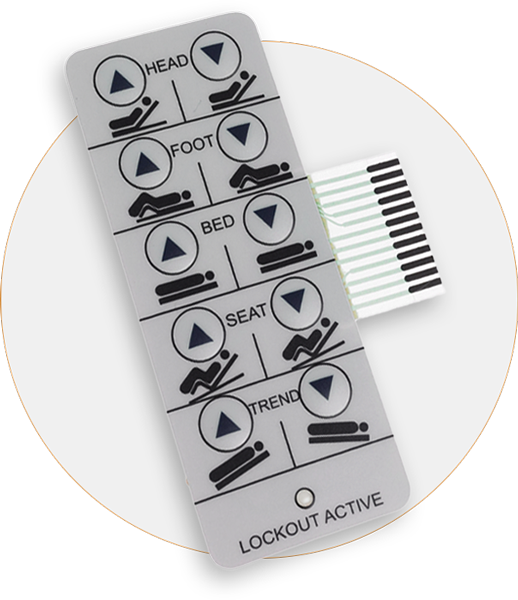A Comprehensive Guide to Membrane Switches for Product Designers
A Comprehensive Guide to Membrane Switches for Product Designers
Blog Article
Recognizing the Value of Membrane Switches in Interface
Membrane switches are indispensable elements in the layout of efficient interface, helping with not only capability however additionally improving aesthetic appeal and individual interaction. Their special features, such as resistance to ecological elements and personalized designs, make them appropriate for a diverse variety of applications across several sectors. As we check out the different benefits and future patterns associated with Membrane technology, it ends up being clear that these switches are much more than simply components; they stand for a merging of innovation and usefulness. The effects of this technology on customer experience deserve taking a look at even more.
What Are Membrane Buttons?

The spacer layer, which includes adhesive homes, enables the separation of the circuit layer from the overlay, guaranteeing that the switch remains in a non-activated state till pushed. When pressure is put on the overlay, it compresses the spacer layer, linking the void and finishing the circuit in the underlying layer. This design not only lowers the physical room required for conventional mechanical switches yet additionally improves the sturdiness of the device, as Membrane buttons are typically resistant to dirt, wetness, and other ecological aspects.
Typically found in applications varying from consumer electronic devices to clinical devices, Membrane switches are integral to modern-day technology, giving a reliable and easy to use interface that straightens with contemporary layout demands.
Advantages of Membrane Buttons
While many switch innovations exist, Membrane Switches offer distinct benefits that make them particularly preferable in different applications. One of the key benefits of Membrane switches is their compact layout, which enables for space-saving applications in tools where genuine estate is restricted. Their thin profile not only improves visual appeal yet also assists in lightweight building.
Another substantial benefit is their resistance to environmental aspects. Membrane switches are normally secured versus moisture, dirt, and impurities, making them perfect for usage sought after environments, such as medical gadgets and industrial devices. This durability extends the life expectancy of the button, reducing maintenance expenses and improving integrity.
Moreover, Membrane switches can be personalized to satisfy details layout requirements, incorporating distinct graphics and shades that improve customer communication. Their responsive responses options can also be tailored to offer a gratifying individual experience. Furthermore, Membrane buttons are economical, specifically in high-volume applications, as they can be generated successfully.
Applications in Different Industries

In the consumer electronic devices field, Membrane switches prevail in gadgets such as microwaves, washing equipments, and remotes. Their tactile feedback and visual choices boost customer experience while offering a sleek, contemporary look. In addition, vehicle manufacturers make use of Membrane switches in dashboard controls and infomercial systems, where area is restricted, and individual engagement is important.
Furthermore, the commercial sector leverages Membrane buttons in control panels for machinery and devices, enabling instinctive operation in usually severe settings. Their resistance to chemicals and moisture ensures durability and reliability in these applications. Generally, the adaptability of Membrane Switches adds substantially to their prevalent usage, making them vital in different technical domains.
Style Factors To Consider for Membrane Switches

When developing Membrane switches, several essential factors to consider have to be considered to guarantee ideal capability and customer experience. The selection of products is critical; selecting durable, top quality substrates can enhance the switch's longevity and resistance to environmental elements such as moisture and temperature fluctuations.
Secondly, the layout of the visuals overlay need to focus on quality and convenience of usage. Icons and text should be clear, and the layout should facilitate instinctive communication (membrane switches). In addition, responsive comments is crucial; including a responsive dome or other systems can improve the user experience by providing physical verification of activation
An additional crucial element is the switch's electric efficiency. Designers must ensure that the conductive traces are effectively created to lessen resistance and avoid signal disturbance. This includes evaluating the required actuation pressure and making sure compatibility with the electronic parts they will interface with.

Future Patterns in Membrane Innovation
As technology continues to advance, important link Membrane buttons are poised to advance considerably, driven by developments in products and manufacturing strategies. One emerging pattern is the consolidation of innovative materials, such as flexible substrates and conductive inks, which boost toughness and reduce the general weight of Membrane switches. These materials not just boost the tactile action yet also permit for the layout of switches that can stand up to harsher ecological conditions.
Moreover, the assimilation of touch-sensitive technologies is transforming standard Membrane Switches into more interactive interface. Capacitive touch sensing units installed within Membrane button panels can offer a much more intuitive and responsive user experience, lining up with the expanding need for streamlined, modern designs in consumer electronics.
Furthermore, improvements in printing strategies, such as electronic and 3D printing, make it possible for quick prototyping and customization of Membrane switches. This flexibility allows producers to respond much more rapidly to market demands and consumer preferences.
Finally, sustainability is ending up being a considerable focus, with producers checking out environment-friendly products and processes. As these trends unravel, the future of Membrane innovation promises enhanced read this functionality, visual allure, my site and ecological obligation, solidifying their role in advanced user interfaces throughout different markets.
Final Thought
Finally, Membrane Switches represent an important component in the layout of customer interfaces, integrating performance with aesthetic adaptability. Their benefits, including resilience and resistance to ecological variables, make them appropriate for diverse applications throughout different industries. Thoughtful style factors to consider improve user communication and experience. As improvements in innovation proceed, the development of Membrane buttons is expected to more fine-tune interface, driving advancement and improving use in a progressively complex technical landscape.
Membrane buttons are integral elements in the layout of effective individual interfaces, promoting not only performance yet also improving visual allure and user interaction.Membrane Switches offer as a vital element in numerous customer interfaces, helping with a seamless communication in between customers and electronic devices.While many button modern technologies exist, Membrane Switches offer unique advantages that make them especially preferable in numerous applications.Moreover, Membrane switches can be customized to satisfy certain layout needs, including unique graphics and colors that enhance user interaction.In conclusion, Membrane Switches represent a vital component in the design of user interfaces, integrating performance with aesthetic flexibility.
Report this page